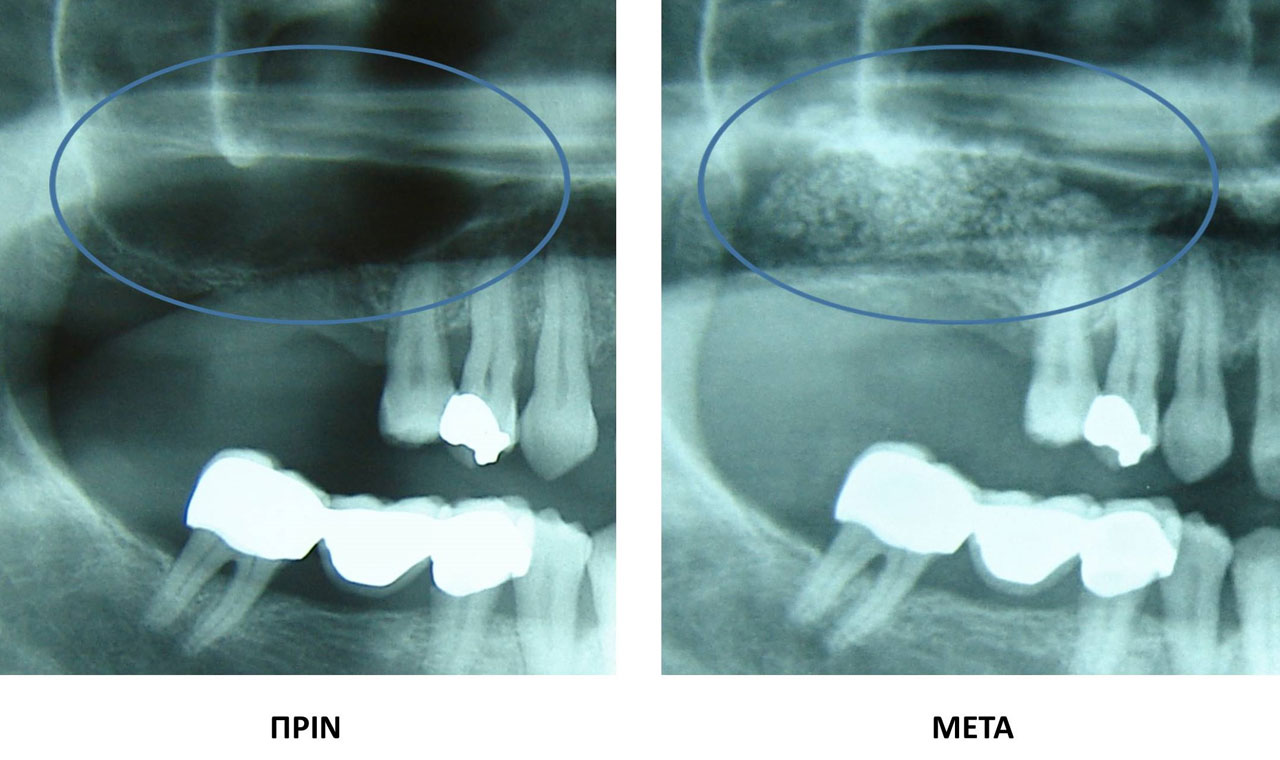With the advancement of medical science, the surgical repair of these deficits is considered imperative, for reasons of functionality, aesthetics and the psychological welfare of patients.
After the development of a deficit, the bone tissue has a regenerative reserve which, however, is not unlimited and depends on various factors such as the size of the deficit, the age and constitution of the person, as well as the type of bone. Based on these data, spontaneous, complete regeneration of bone tissue may not be possible and the empty space, in these cases, is replaced by fibrous connective tissue.
In this context, the contribution of grafting materials in various categories is crucial. Autografts are considered the gold standard because they have osteogenic properties with zero development of immune reactions or infectious diseases. However, they are available in limited quantities and show increased morbidity due to additional surgery at the donor site. At this point, application of various grafting materials - allografts, xenografts, alloplastics and growth factors - with various properties and characteristics - have been gradually developed in an effort to support the healing process without the disadvantages of autografts. In fact, recently, among other studies, an attempt is being made to focus scientific research in the field of synthetic / alloplastic materials as they are available in relative abundance, at an affordable cost, without risk of disease transmission. They also offer the possibility of using combination grafts and growth factors, expanding the dimensions of this scientific field.
In particular, in the field of Oral Surgery, the aforementioned materials are used mainly in the context of restoration of the volume of the alveolar ridge as well as in cases of elevation of the sinus cavity, in order to be able to subsequently restore with dental implants.
A. Regeneration of the alveolar ridge
In several cases where there is a need for implants in the jaw bone, a deficit in a horizontal or vertical plane is observed after a thorough radiological examination, which essentially prohibits the placement of an implant. In these cases it is possible to regenerate the bone of the alveolar ridge with the use of the aforementioned bone graft materials.
There are several methods of bone regeneration and their possible combinations and their description goes beyond the needs of this text. When it comes to choosing a particular method, the decision is made depending upon both the given conditions and the requirements of the patient.
B. Maxillary sinus lifting
In many cases of edentulous posterior areas of the upper jaw where the application of implants is required, following radiological examination, a lack of bone in the vertical plane for their placement is observed. In these cases, it is possible to increase the height of the jaw bone by placing a bone graft in the sinus cavity, a procedure that is very predictable in terms of its result and is a procedure that can be performed in the dental practice, without the need for hospitalization.



